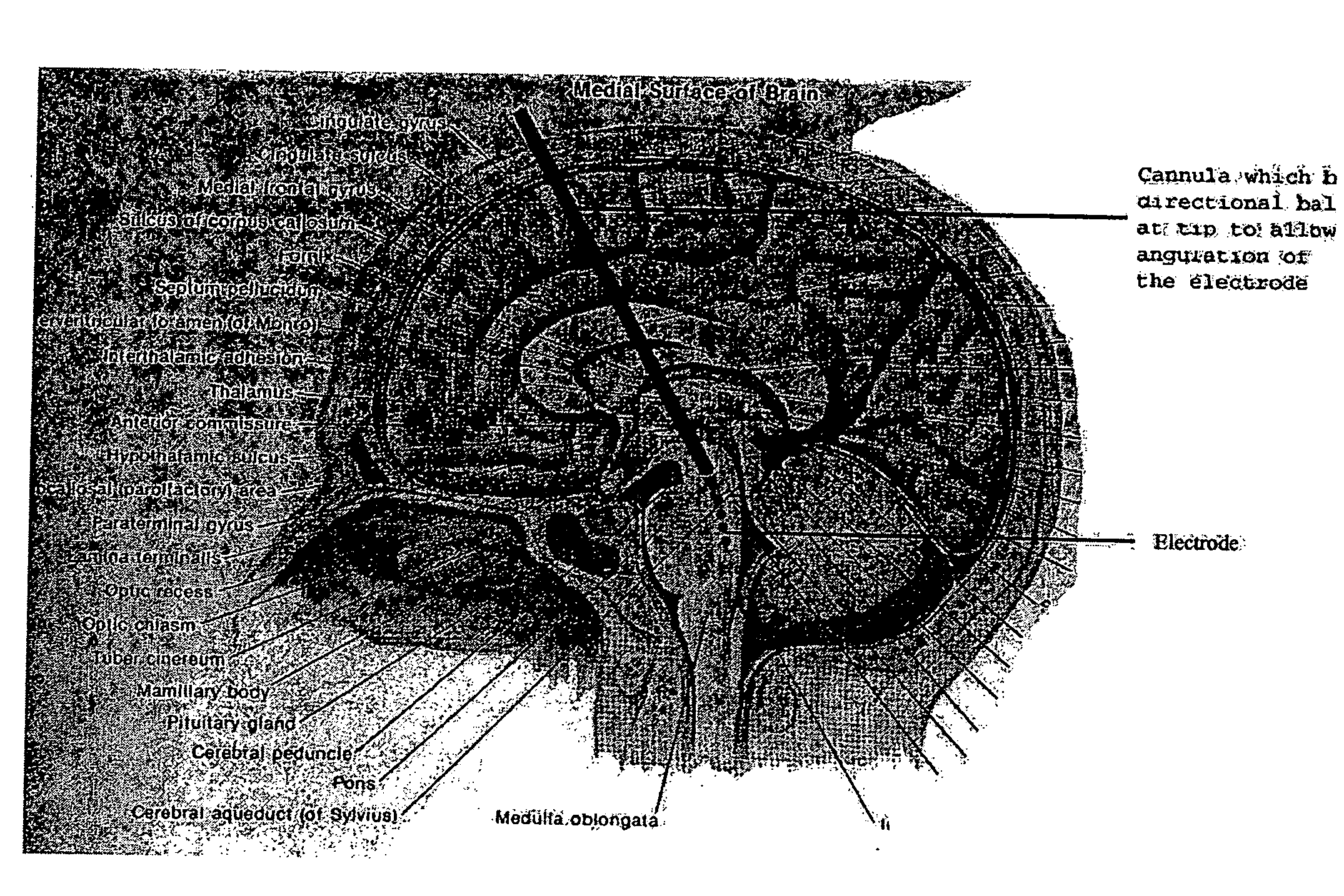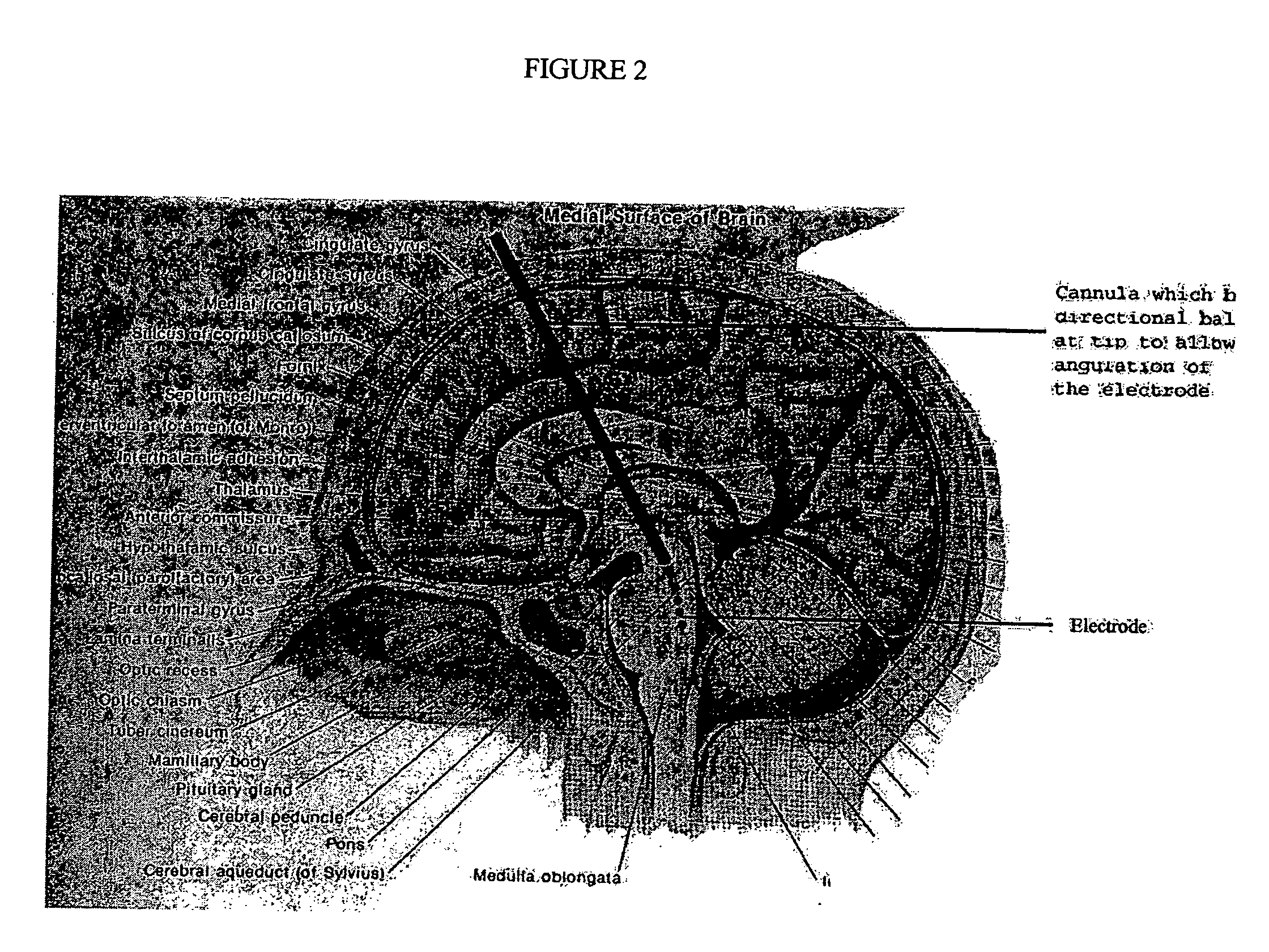Neurostimulation for affecting sleep disorders
a sleep disorder and neurostimulation technology, applied in the field of neurostimulation for affecting sleep disorders, can solve the problems of inability to alleviate or prevent potential side effects, limited possibility of providing continuous benefits, and fundamental limitation of being inherently irreversibl
- Summary
- Abstract
- Description
- Claims
- Application Information
AI Technical Summary
Problems solved by technology
Method used
Image
Examples
Embodiment Construction
[0055] Surgical treatments for the above-described sleep disorders that have traditionally been treated by behavioral therapy or drugs, have been largely limited to stereotactic lesioning, such as cingulotomy, capsulotomy, subcaudate tractotomy, and limbic leucotomy. Such procedures have also been applied to date in the treatment of affective disorders and anxiety disorders. If one critically examines the results of these procedures in the literature, it becomes apparent, when applied to a carefully selected patient population in conjunction with modern stereotactic surgical equipment and imaging techniques, that these procedures are both efficacious and safe. In fact, in a certain subset of patients who have failed all conventional treatments, these neurosurgical procedures may be the only treatment options available. Therefore, electrical and / or chemical neurosurgical neuromodulating techniques, with their inherent reversibility and adjustability, offer a safer and potentially mor...
PUM
 Login to View More
Login to View More Abstract
Description
Claims
Application Information
 Login to View More
Login to View More - R&D
- Intellectual Property
- Life Sciences
- Materials
- Tech Scout
- Unparalleled Data Quality
- Higher Quality Content
- 60% Fewer Hallucinations
Browse by: Latest US Patents, China's latest patents, Technical Efficacy Thesaurus, Application Domain, Technology Topic, Popular Technical Reports.
© 2025 PatSnap. All rights reserved.Legal|Privacy policy|Modern Slavery Act Transparency Statement|Sitemap|About US| Contact US: help@patsnap.com



